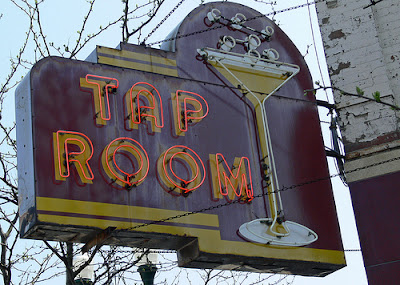In 1851, frontier downtown Ypsilanti burned down and was rebuilt with red common brick. By the late 1880s, many Michigan rural communities began erecting ornate water towers responding to their increasing populations and industrialization after the Civil War. Sanitation and drinking water improved, while increased water pressure made fire-fighting more responsive and successful.
 |
| Ypsilanti Water Tower - 1889 |
These nineteenth century water towers were landmarks and symbols of civic pride, but none was as iconic as the Ypsilanti Water Tower, built across from Eastern Michigan University on Ypsilanti's highest point. This public-funded water supply system took only ten months to build and was finished in February 1890. It consisted of seventeen miles of feeder pipe, one hundred and thirty-two fire hydrants, a pumping station, and a one hundred and forty-eight foot tall tower. The octagonal cupola on top was removed in 1906 because of fears strong winds might undermine it and send it toppling below.
At the turn of the twentieth century, Ypsilanti was a thriving farming community surrounded by thousands of
acres of fertile land under the plow. The area was also known for its orchards
and wooded tracts teeming with wildlife. The city boasted having some of the best
representations of Victorian architecture in Southeastern Michigan. The town
prospered.
 |
| Daniel Quirk mansion today. |
World War I transformed America overnight from a rural farming country into an urban one. When the weight of the Great Depression hit the heartland, many of the family farms in Ypsilanti fell into disrepair or were simply abandoned. In fundamental ways, Ypsilanti was a microcosm of the American economy. Its fortunes waxed and waned with those of the country. Things were tough all over.
With
another World War looming, automobile magnate Henry Ford and his son Edsel did
their part for the war effort by quickly building the world’s largest and most
modern airplane factory. The Willow Run B-24 Liberator Bomber Plant was built
on orchard land just east of Ypsilanti owned by the Ford family.
After the Japanese attack on Pearl Harbor on December 7th, 1941, the United States experienced a wave of patriotism, and Ypsilanti was no different. There was yet another drain of manpower for the war effort—the second time in twenty-seven years. Another generation of Ypsilanti’s young men answered the call to serve their country.
After the Japanese attack on Pearl Harbor on December 7th, 1941, the United States experienced a wave of patriotism, and Ypsilanti was no different. There was yet another drain of manpower for the war effort—the second time in twenty-seven years. Another generation of Ypsilanti’s young men answered the call to serve their country.
 |
| At peak production, the Willow Run plant could produce one plane every hour. |
But that left Henry Ford desperate for workers to run the Willow Run B-24 bomber plant, so the company recruited heavily from the South to help make up the manpower shortage. By March 1, 1943, 6,491 came from Kentucky, 1,971 from Tennessee, 714 from Texas, 450 West Virgina, 397 from Arkansas, and 314 from Missouri. In the most dramatic demographic shift in the area since the white man drove the red man west, Ypsilanti went from a rural sunrise-to-sundown farming community to a round-the-clock factory town. To make up the rest of the labor shortfall, hundreds of local women stepped up to fill jobs collectively earning the nickname "Rosie the Riveter."
Ypsilanti became a boom town overnight. Suddenly, downtown was beset with unattached men who had money in their pockets looking for a good time—some were single and some were not. Michigan Avenue bars did a box office business attracting thirsty and bored customers from the plant.
Because the bomber plant ran three shifts, the bars had customers all day long. Drunken brawls were not uncommon among rowdy plant workers, but problems also broke out between the workers and townspeople--often over women.
This tense atmosphere gave downtown Ypsilanti an edge changing its character.
Residents bemoaned the changes to their town and called the newcomers Ypsituckians--a nickname offensive to many. The east side of town quickly became the blue collar residential area, as it was nearest to the bomber plant.
Because of the immediate need to house these men, some residents rented out bedrooms in shifts. Many of the beautiful old period homes were subdivided into small apartments or became boarding houses. In Willow Run, barracks-style housing was hastily thrown up to address the desperate situation. Some people worked double shifts and lived out of their cars until they could get situated.
 |
| Thirty-fourth President of the United States |
More details about Ypsi's Water Tower: http://www.mlive.com/news/ann-arbor/index.ssf/2014/02/ypsilanti_water_tower_named_in.html



No comments:
Post a Comment